Description
Yacón, Smallanthus sonchifolius, is a sweet, crispy, and tasty perennial root crop. Despite its status as a perennial, yacón is typically treated like an annual, dug up once a year and replanted. Yacón grows to heights of six to eight feet tall and forms as a clumping herb. The storage roots are the most sought-after product. However, the main stem may also be eaten as a cooked vegetable. The storage roots are high in fructooligosaccharides (commonly used as a sugar alternative) and contain very few calories. Yacón is a very beautiful and productive plant!
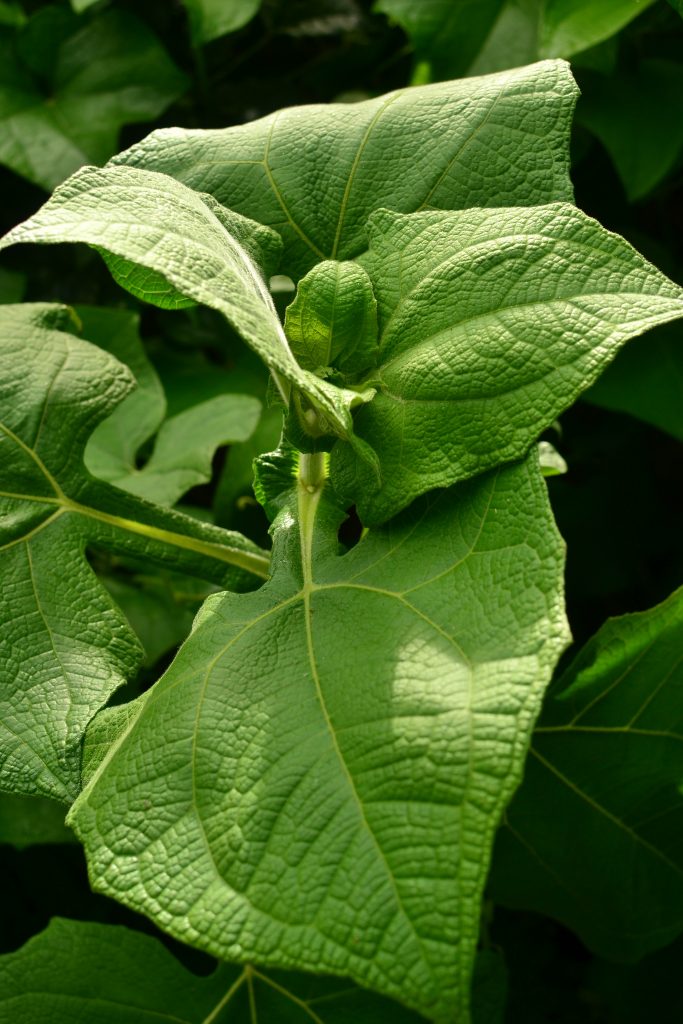
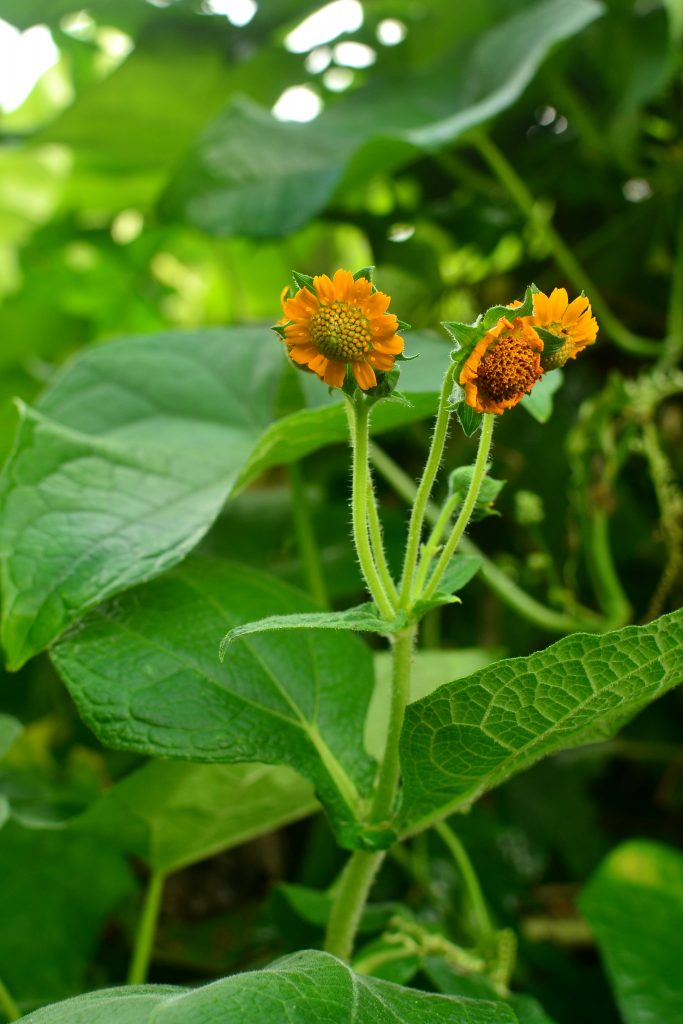
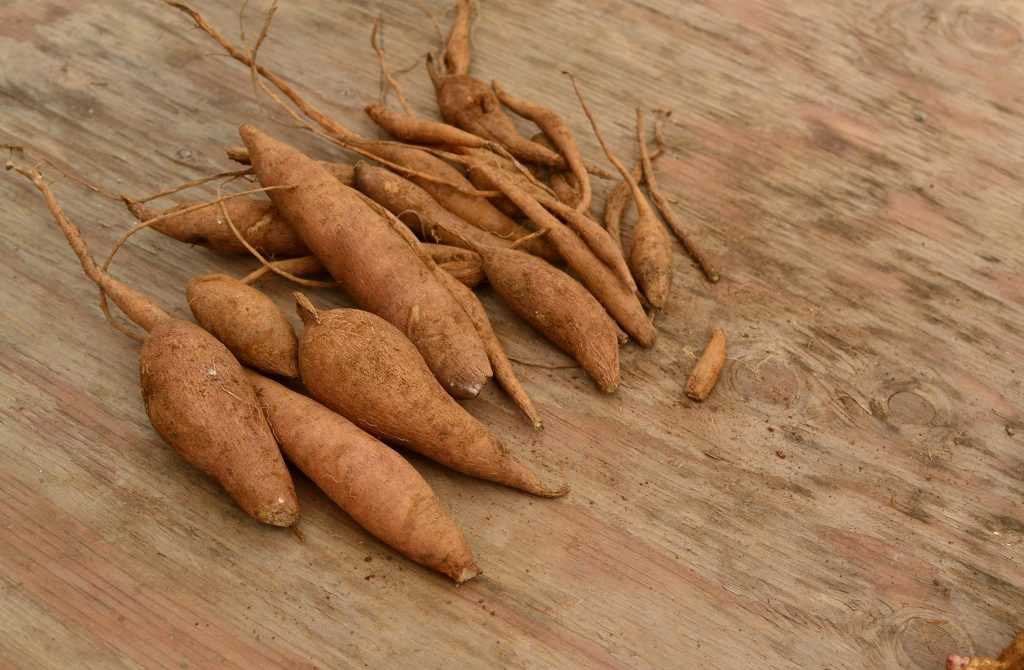
Propagation
Yacón is propagated by offsets produced at ground level near the top of the crown. It may also be grown from stem cuttings.
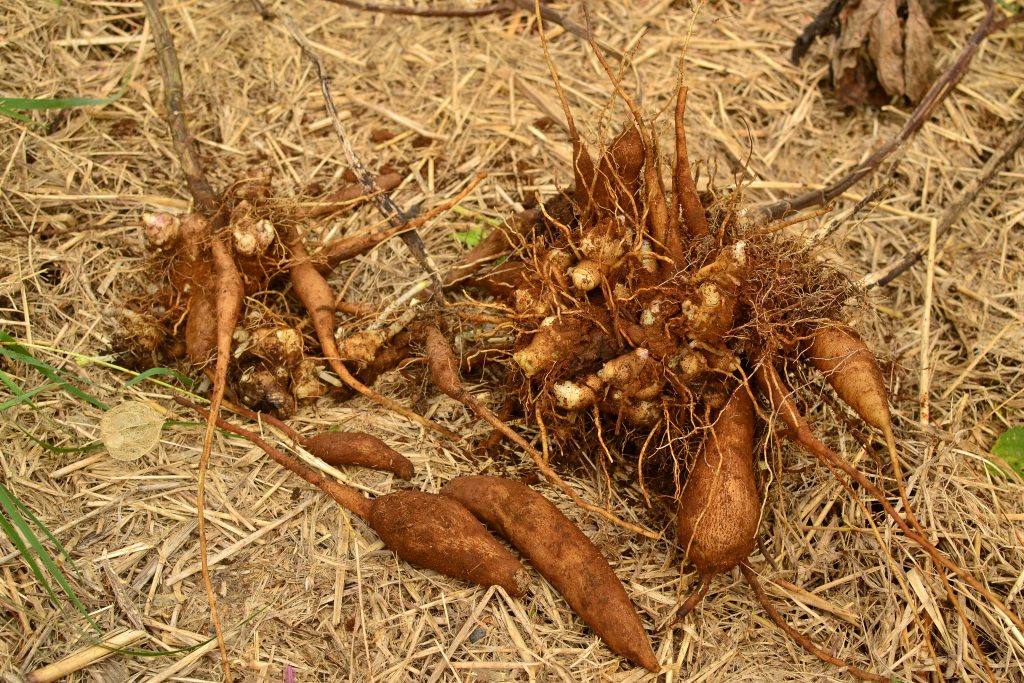
Harvest when stems die back
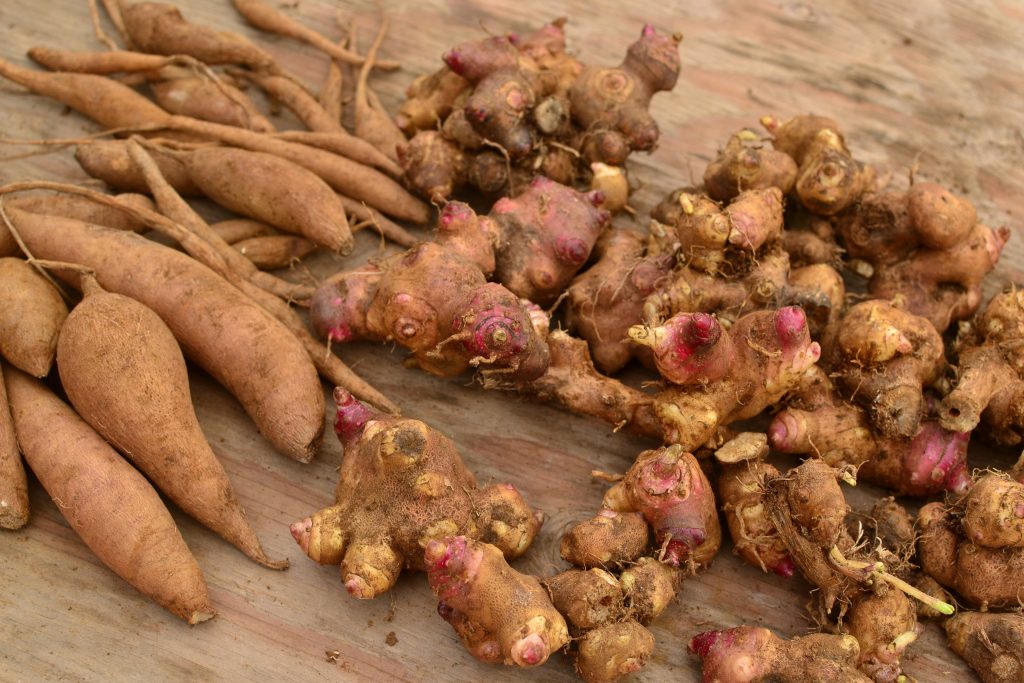
Clean and separate larger storage roots from offsets
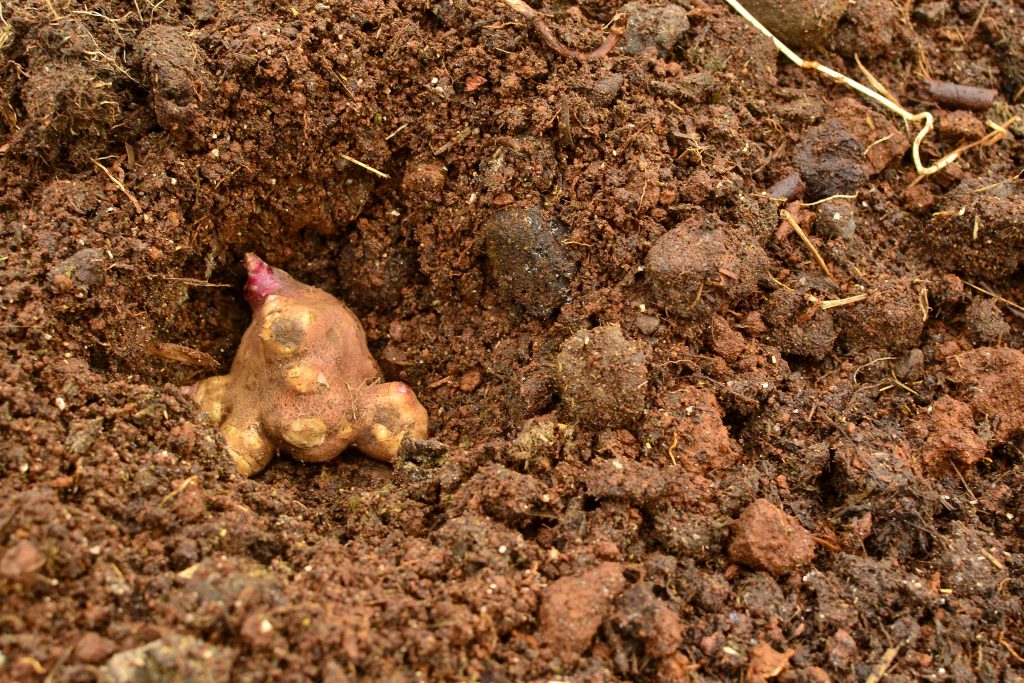
Plant offsets below soil surface
Care
Yacón likes loose soil, and prefers full sun or light shade. Once planted and weeded a few times, the plant will take care of itself. You may harvest within the first year, or leave the plant to grow multiple seasons for a much larger harvest.
Eating
Yacón is harvested once the stems die back and energy is transferred to the storage roots, usually six months to one year after planting. Storage roots are left out in the sun for a few days or weeks to sweeten up. Once the skin has slightly wrinkled, it can be peeled off and the roots consumed. Yacón is usually eaten raw, but is sometimes boiled or baked, made into a drink, or made into a sugar substitute (yacón syrup). Storage roots stored in a cool place will last a few months before deteriorating.
Where to obtain planting materials
I’ve seen yacón for sale at a few plant sales and quite a few individuals on island grow it. Ask someone growing it for some offsets for propagation.
My Garden
I’ve been growing yacón for over two years now. The initial places I planted it were too shady and the soil was too shallow. The plants would develop but not grow to their full potential, leaving me with a tiny harvest. I learned I needed to give them more sun and a larger root area. This year, I decided to dig up just two plants and allow the rest to go another year before harvest, in hopes that I will get a larger crop next season. The two plants gave me a small harvest but lots of propagation material; I will plant those out in more fluffed soil and fertilize more in order to gain larger harvests. I got my propagation materials from a friend’s farm in Kohala where they grow huge yacón plants with massive yields, so it does have the potential to be a highly productive crop. It just needs a little more cultivation on my end. Ever learning as I go along!
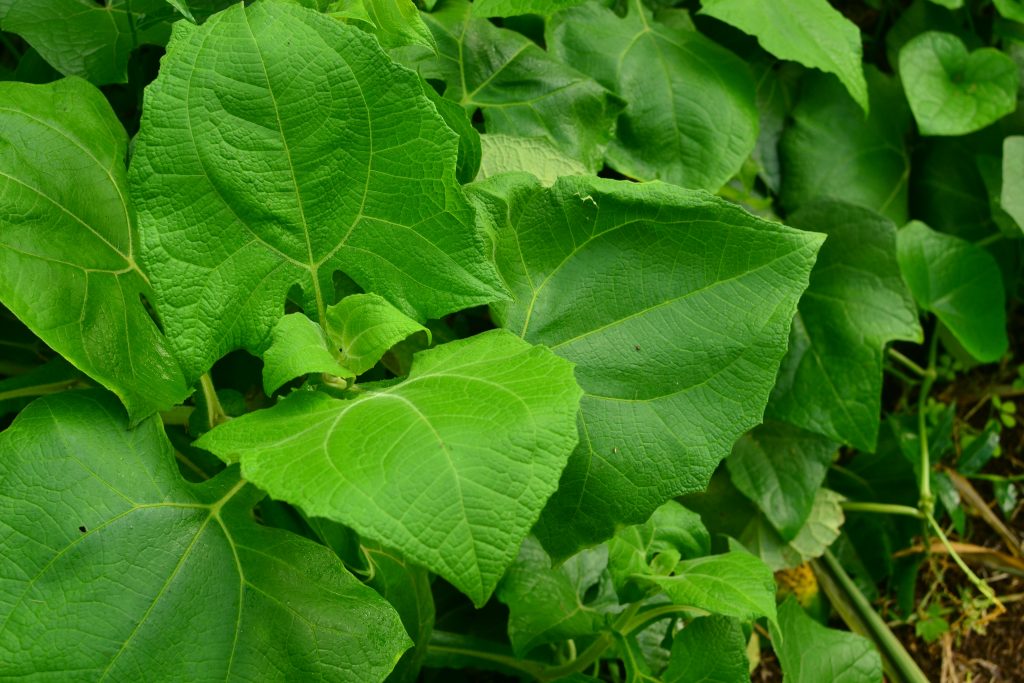
Happy Gardening!